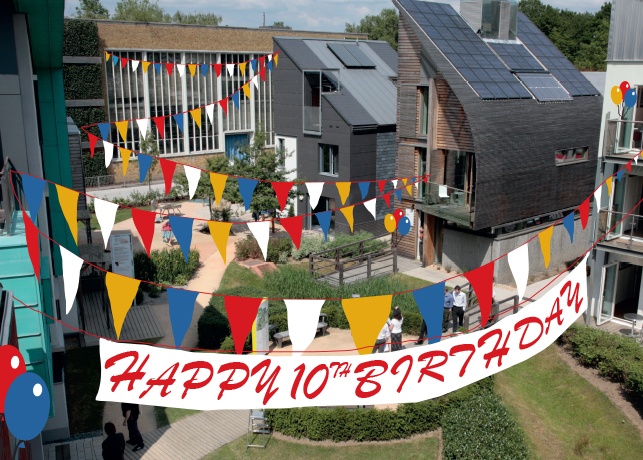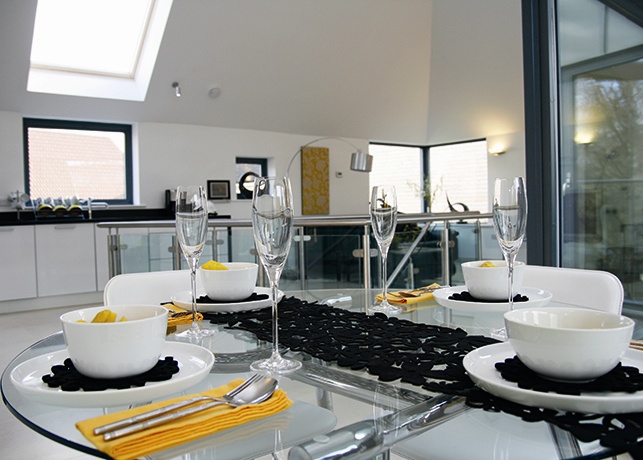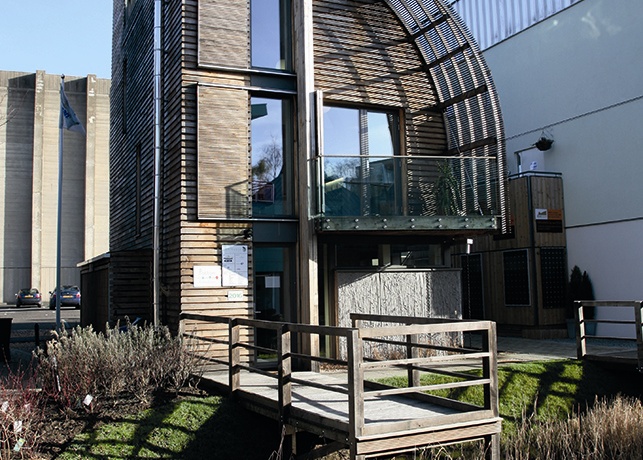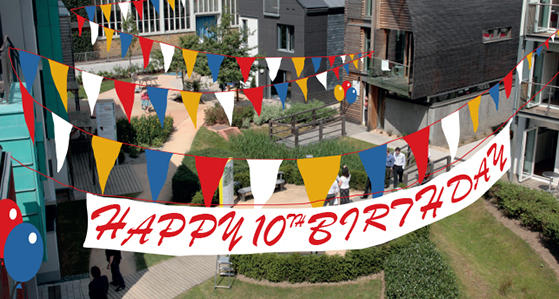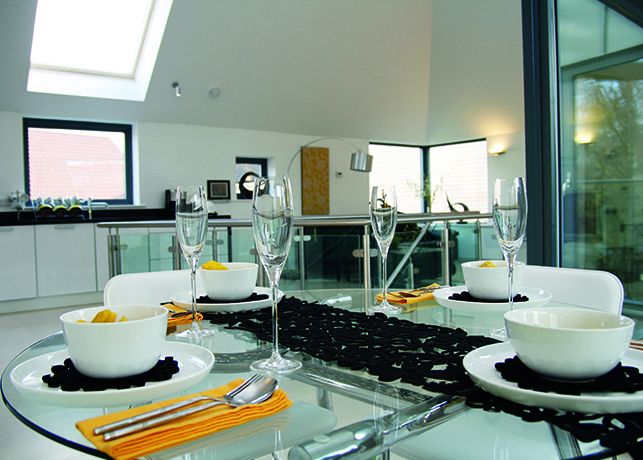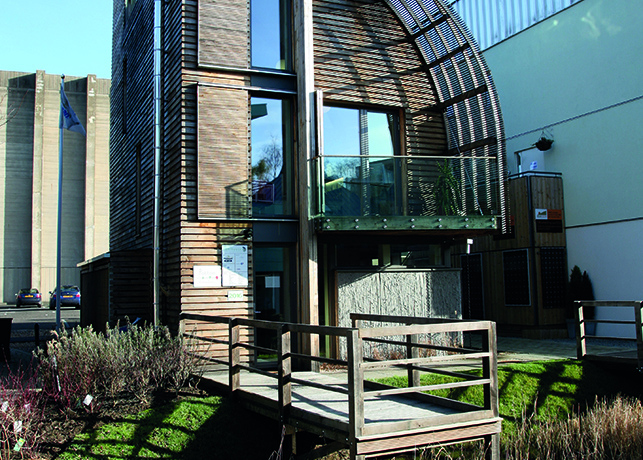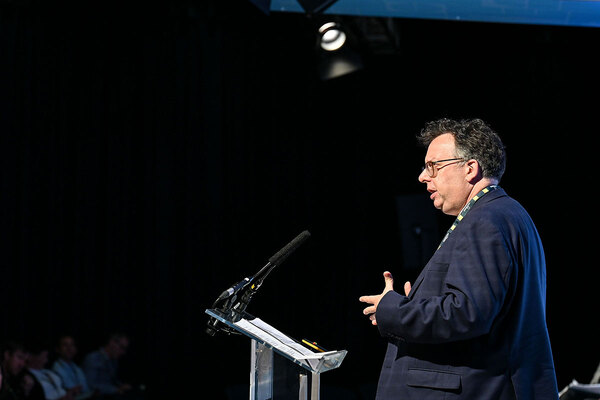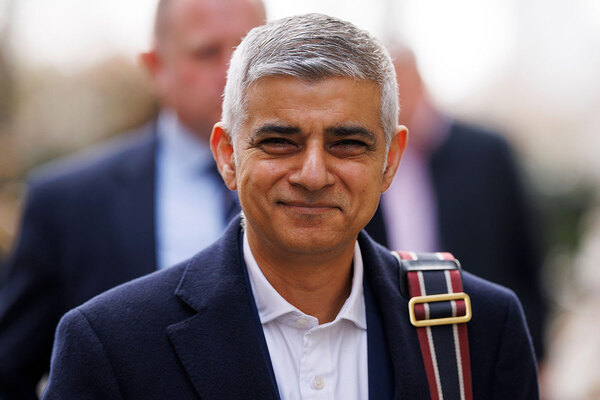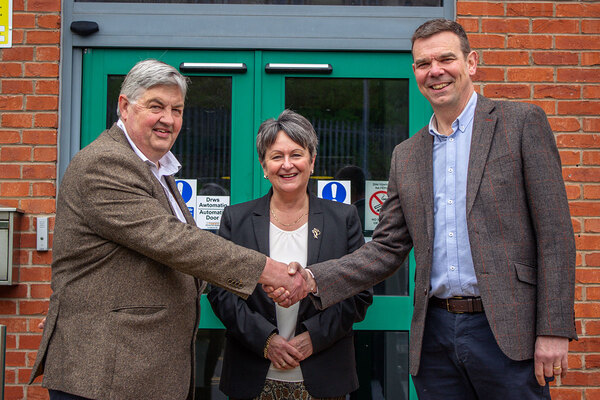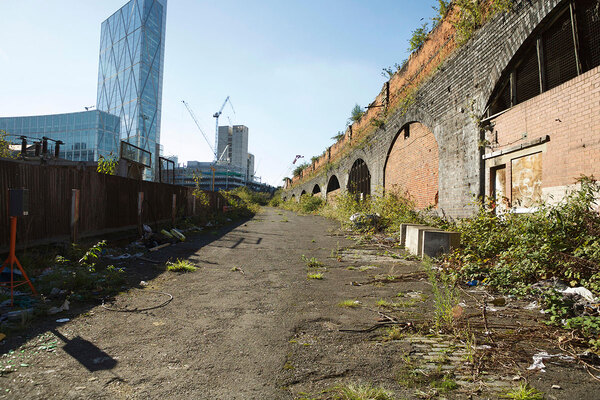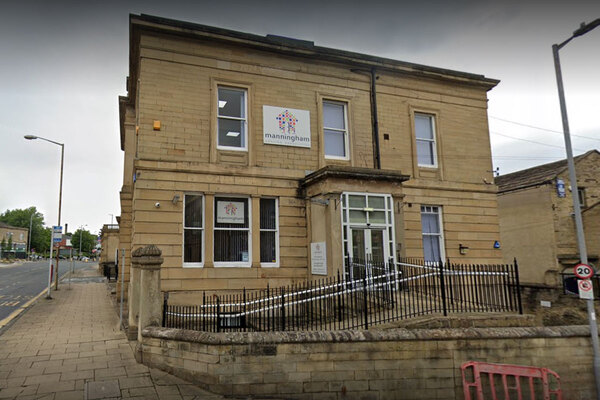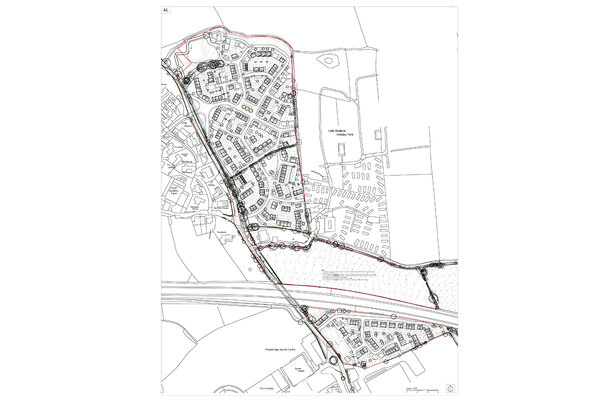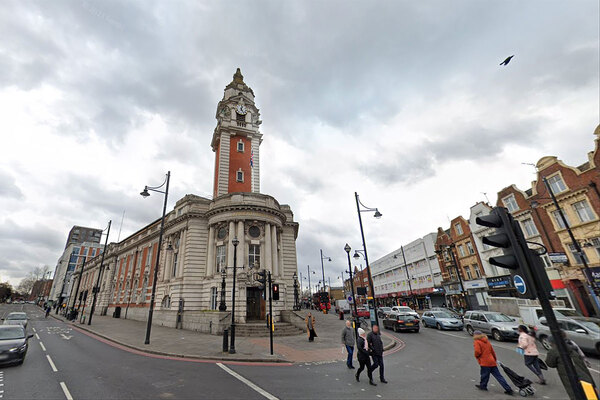You are viewing 1 of your 1 free articles
10 years later
Ten years ago, the Innovation Park opened to be a test-bed for new technologies and construction techniques in housing. Kate Youde revisits its legacy
Stepping into the family house, the first thing I notice is the smell. Not the fragrance of flowers, baking bread or fresh coffee that can sometimes accompany house viewings, but the whiff of “rotting hemp”.
It is coming from the white walls, which contain a mix of hemp and lime. “We think when we constructed it, it never quite dried out in the middle so there is maybe some damp rotting hemp in the middle [of the walls],” explains John O’Brien, technical manager at the Innovation Park, a test-bed for sustainable construction methods on a 60-acre site in Watford run by BRE, formerly known as the Building Research Establishment. When the house is taken down, the team will be able to assess the ‘lessons learned’ and feed them back to the industry.
“It showed this was all possible and maybe, in one part, that’s the reason why so many homes were accredited against sustainability standards.”
Andrew Eagles, managing director, Sustainable Homes
This is the ‘Renewables House’, and it takes up one of 13 lots in the Innovation Park, each of which allow developers and designers to experiment with different ideas. The houses each “tell a story and when their story is told we can deconstruct them and much of the material goes back into being recycled”, says Mr O’Brien.
He is giving Inside Housing a tour of the Innovation Park to mark the occasion of its 10th anniversary. We are here to find out what the impact of this hub of technological and technical innovation has been on the construction of social housing. And to consider the future of the park – and sustainable technology itself – in light of government policy changes.
Start of the story
The story of the park actually stretches back 12 years to 2003, when BRE held its first temporary exhibition on offsite construction (see box below). Afterwards, the organisation decided it would be useful to have semi-permanent displays showing the industry how to build to a higher quality, and quicker. John Prescott, who was then deputy prime minister, had famously challenged house builders to build a family home for £60,000, and it was him who officially opened the Innovation Park in June 2005. Since then, it has welcomed an estimated 80,000 visitors, including people from the construction industry, social landlords and 12,000 schoolchildren. The park is not open to the public, aside from an annual open day.
The park’s interest in sustainability came into focus the next year, when the Code for Sustainable Homes was launched, a government-owned national standard for assessing the environmental performance of new homes that was based on BRE’s existing EcoHomes scheme. From 2007, social landlords were expected to meet at least Level 3 out of 6 of the code when building new homes, in order to qualify for government grant. At the end of June this year, more than 550,000 code certificates had been issued. According to BRE, around 55% of these homes were publicly funded.
“What’s been great about the Innovation Park is it’s meant people have been able to kick the bricks and see the real thing,” says Andrew Eagles, managing director of the consultancy Sustainable Homes, explaining this was particularly important at the start of the code. “The homes built there were accredited against the code so that was really key. It showed this was all possible and maybe, in one part, that’s the reason why so many homes were accredited against sustainability standards.
“I think it helped to normalise sustainability so, for example, they used to have a Kingspan Lighthouse that was Code Level 6. It made it seem more achievable because people had already done it.”
“It needs to be built into every house rather than the exception.”
John Giesen, chief executive, B3 Living
This year, however, the government has withdrawn the code, absorbing its energy and water requirements into Building Regulations, scrapped a policy to have zero-carbon new homes from 2016 and stopping funding the Green Deal for energy efficient home improvements. Given this, is the park’s work still relevant?
“I think it’s more relevant than ever,” says Mr O’Brien. “People are much more savvy about what they buy. Before it [the thinking] was the legislation will catch up and people will live in better homes. Now, if you want to differentiate your project, you will be in a better place if you can show your buildings are a better product for buyers.” The BRE is introducing a voluntary five-star Home Quality Mark (HQM), which rates a new home’s energy performance, running costs, impact on occupants’ health and well-being, environmental footprint, resilience, and digital connectivity and performance.
Mr O’Brien, who worked in asset management for 10 years with social housing providers in London, including 385-home Hornsey Housing Trust and 15,000-home One Housing Group before joining BRE, suggests reduced bills through energy efficiency could make it easier to get a mortgage. Sustainability also benefits social landlords. “If your outgoings are less because you’ve got an energy efficient home, you’re more likely to pay your rent,” he claims.
He adds that construction companies have invested millions of pounds bringing their supply chains up to standard and developing their workforces, and they will not throw that by the wayside.
But what does the sector think of the Innovation Park? Tony Stacey, chief executive of 5,500-home South Yorkshire Housing Association, admits he has neither visited nor is familiar with its work. John Giesen, chief executive of 4,500-home B3 Living and chair of Placeshapers, a network of more than 100 housing associations, has visited and says the park is interesting but “not the whole picture”. He adds: “I think innovation is really important but it needs to be mainstream to make it really cost-effective. The quantity builders are the ones who will dictate how these things will play out because it needs to be built into every house rather than the exception.”
Resident-ready
Earlier homes on the park tended to be more experimental – although elements have been adopted by the industry. Mr O’Brien says the latest homes focus on the volume market. They include brick manufacturer Wienerberger’s e4 brick house, which launched in June and will be the first home assessed to the HQM, and factory-built affordable housing from technology company Üserhuus, which will be officially launched on the park this month.
“They are built to be market-ready,” says Mr O’Brien. “They will achieve Building Regulations; we have even plumbed them and installed wi-fi in them so we can get people to live in them for a period of time, because post occupation evaluation is important. If you get someone living in them you can learn a lot more about what works and what doesn’t.
“Initially we did do the concept houses and everyone got learning out of that, and it built up funding and research around delivery to high levels of the code. The more recent houses are the ones you can go into and say, ‘I’d like to order 100 of these’.”
“You’ll be able to heat and light your house for £10 a month.”
Tigh Grian, director, Gordon Campbell
Üserhuus’ associated developer Tigh Grian will start work this month on 48 Üserhuus homes in Alva, near Stirling, for Link Housing Association, which provides housing management services for more than 6,500 tenants, and 1,400-home Paragon Housing Association. It is seeking a social landlord partner to develop 100 homes in West Sussex and 14 in Northumberland.
The homes in Alva will have the highest level of energy efficiency in new build housing in the UK, according to Tigh Grian director Gordon Campbell, with heat from appliances captured and recycled. “You’ll be able to heat and light your house for £10 a month,” he says. Having a house on the Innovation Park “brings a huge amount of endorsement to what we’re trying to do”, he adds.
Looking ahead, Mr O’Brien says the team at the park will work on building resilience into homes so they adapt to future needs, the ‘connectivity’ between homes such as the sharing of energy, building more smaller homes and infill units, and improving the energy efficiency of existing homes.
At the moment, he says 99% of the country’s stock fails to meet the 2050 target to cut carbon emissions by 80% from 1990 levels and, to achieve the target, there will need to be a national average of an Energy Performance Certificate B rating.
“The challenge is massive,” he admits, “but we know our homes contribute 27% to current emissions.”
Timeline
2003: BRE holds OFFSITE03, its first large-scale event on offsite construction methods
2005: John Prescott opens the park during OFFSITE05, for which three demonstration homes are built
2006: The Code for Sustainable Homes launches
2007: The Kingspan Lighthouse – one of four new homes built on the park to the code – is the first Code Level 6 house in the UK
2008: The Barratt Green House is the first Code Level 6 house from a volume house builder
2011: The Prince’s Natural House officially opens – the only permanent project on the park
2015: The park celebrates its 10th anniversary with the launch of the Wienerberger e4 brick house
